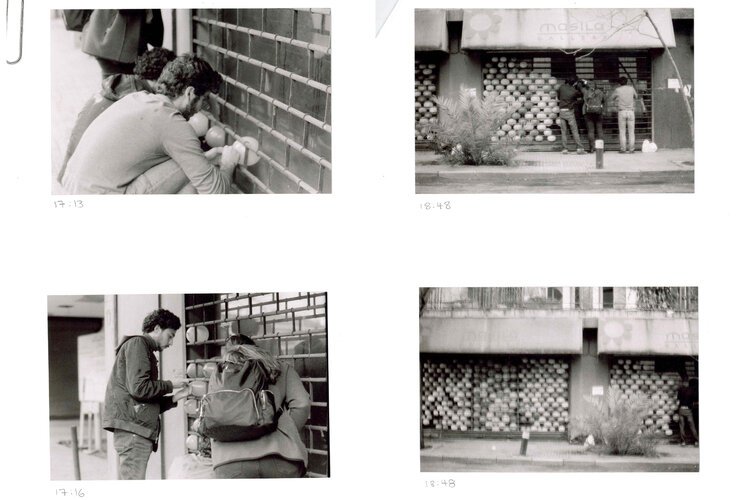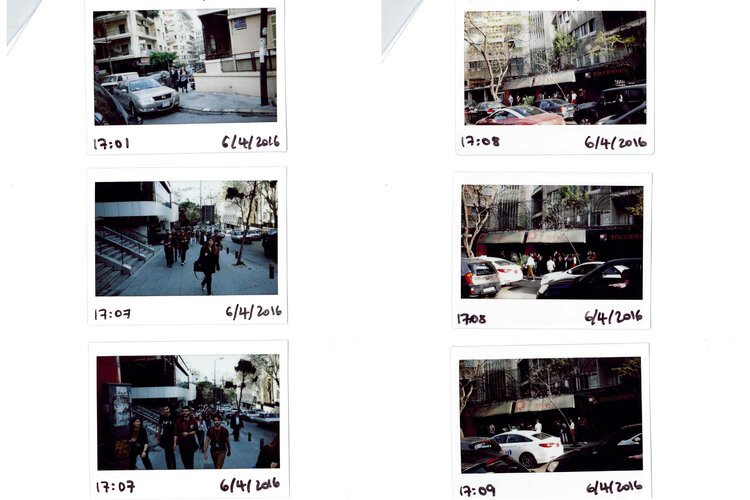
Silence
Urban Interventions
Vertical Studio co-taught by Rana Haddad & Joanne Hayek at AUB, MSFEA, ArD
Silence
— or how to build a radical new aesthetic that informs the field of unintentional sound, interpenetration, chance, and indeterminacy.
A project that investigates the noise pollution of Beirut through an architecture design studio conducted at the Faculty of Engineering and Architecture of the American University of Beirut (AUB, MSFEA, ArD) with 3rd and 4th year students — co-taught in Spring 2016 by Rana Haddad and Joanne Hayek.
Through a sequence of design assignments, students addressed current issues related to intervening in public spaces with hand-built one-to-one temporary architectural installations. Silence culminated with four 1:1 scale interventions in four different sites of the city: the Gefinor Center in Hamra, Horsh Beirut in Kaskas, a Pedestrian Bridge in Dora, and an Abandoned shop on a Noisy Street in Sanayaa.
These interventions aimed to trigger a dialog about the soundscape of Beirut and its effect on the well-being of the population.
“The sound experience which I prefer to all others is the experience of silence, and the silence almost everywhere in the world now, is traffic.”
— John Cage
Listen to Observe
سماع لفرجيك
«Listen (so i can make you) to Observe» is a series of twenty-two boxes, that confront the public and attempt to shed light not only on noise pollution but on a noisy bureaucratic system. The project invites the hasty bridge pedestrians to pause for an instant to experience five different declinations guided by the one act of entering one’s head into the box. Each box carries a message written on its outside, hinting at a new perception.
Nadine Abdulsalam, Faisal Annab, Racha Doughman, Nadine Eid, and Lea Ramadan.
Radio Silence
تشويش
The project aims to create an awareness of the surrounding environment in Horsh Beirut. It tackles two different thresholds within the site using a common playground game that is yet absent from the Horsh: the seesaw. Radio Silence questions the barrier that exists between the different users by placing a seesaw as a gate belt on a permanently locked door.
Betina Abi Habib, Zeina Bekhaazi, Souha BouMatar, Mario El Khouri, and Karen Madi.
In Between
بين و بين
The plaza is visually quiet. Yet the urban soundscape dominates. The tree is a buffer. Yet the urban doesn’t allow it to fulfill its potential. It trims and deprives of the silence a tree can offer. Only the leftover-spaces, the in-betweens, endure. The in-between of the trees is inviting. The ramp that cuts the plaza slowly leads the user to pause and reflect on the new nest space surrounded with leaves and whispering wind instances if one is lucky. It takes you into the buffer zone, where you lie down, displaced from your surroundings, between silence and sound. You are left in-between.
Mira AL Jawahiry, Luzan AL Munayer, Mia Baraka, Ibrahim Kombarji, and Shada Mustafa.
Autonomous
تظاهر مشروع
In the Arabic language the two words Tazahor and Mashrou3 encompass different meanings oscillating between political and sometimes neutral connotations: Tazahor (noun) as protest and/or pretend while Izhar(verb) as reveal and Mazaher (plural noun) as appearances.
Mashrou3 as project, scheme, legislated and/or licit. The project grew from these linguistic nuances to design spatial occurrences: situations.
Different sets of happenings were taking place every Wednesday from 5 to 7pm by an abandoned shop in a deserted building. Students were there with a happening that was defined directly from the site itself. The noise that they tackled was more socio-political than sound itself. Limits were re-defined as they were facing a security zone that was always guarded. Each situation led to another.
Natacha Bou Akl, Helene Chartouni, Andrea Comair, Omar Darwiche, and Mohamad Deeb.
















